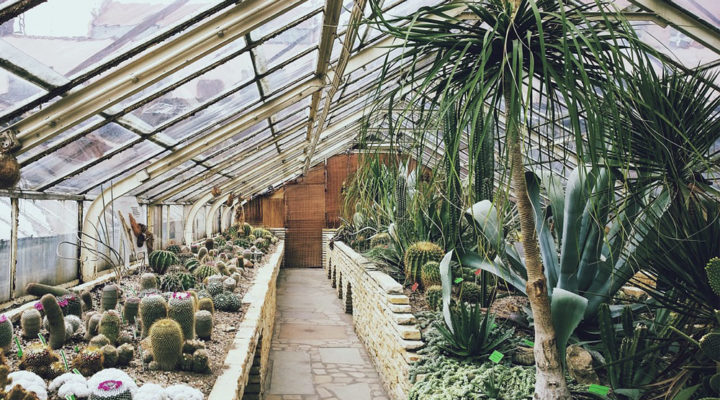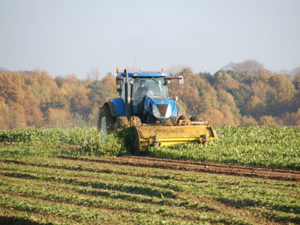
Have ever had moments when you really want to start doing something but don’t seem to know where and how to start? If this happens to you all the time, then it is definitely time to change. Let’s begin with your deserted garden which you’ve forgotten for a very long time. I will show you how to restore it to its former glory. Imagine yourself in a beautiful and relax garden. It’s great, isn’t it? And don’t you worry if you haven’t know anything yet, I’ll be your companion during the process. Without further ado, let’s get to work.
Clear the Area
Basically, this is the first step where you remove all unnecessary elements and clear the land so you can start to work on it. Here is how exactly you should do it:
Use an electric lawnmower and get rid of all the weeds that have been growing uncontrollably during that time you forget about them. You don’t need to deal with the roots yet, we’ll talk about that latter. Just make sure you cut off all those bushy plants. You need to have access to the garden before start doing anything else.
After that, pick up any noticeable rocks or stones scattered on your soil. And also do that with branches or leaves. You might need an excavator if it’s too big to carry. You can throw them away if you want, but I recommend you use those leaves and branches to make compost (also use that cut-off weeds too). It is really easy and will benefit your soil greatly.
And now let’s move to the final problem, the weed roots. There are two options for you. The first one is to eliminate the roots using herbicide. This method is quick and easy. The weeds will be entirely removed, but your soil will undoubtedly contain some chemical remnants. I often use Round-up for this process. Use the backpack sprayer and fill it up with the remedy, spray it onto the grasses. Leave it for one or two days then the roots will soon become withered. The rest of it is pretty simple, just use the rake and get them out of your soil.
Another way is to use landscape fabric to cover the roots and fill it up with soil. The fabric will indirectly kill the roots by isolating them from the sun. And if you don’t have the budget for it, you can use thick paper sheets to cover instead. It’ll have the same effect but not as effective.
Finally, clean the rest of the garden using a rake. Gather all the wastes such as plastic bags, nylons, etc. Then put them in the trash bin.
Till and Cultivate the Land
 Behind any bumper harvests, there is a well tilled and cultivated soil. It is essential to have your garden prepared before planting. Tilling will break up the ground and make it easier to further changes. And since your soil is deserted for a long time, it is desperately craving for nutrients. You can either do it by hand or use machines. Here is how:
Behind any bumper harvests, there is a well tilled and cultivated soil. It is essential to have your garden prepared before planting. Tilling will break up the ground and make it easier to further changes. And since your soil is deserted for a long time, it is desperately craving for nutrients. You can either do it by hand or use machines. Here is how:
By Hand
You’ll need a shovel and a fork. Use the shovel to dig up a trench about 18 inches deep. Place the scooped soil next to it. Dig another trench right next to it about 6-7 inches. Repeat until you’re satisfied with the number. After you’ve made enough, return to the first one. Scoop the soil on the right and pour it into the trench. Also, do this with all remainings.
And if you want to add compost to the land, pour it onto the trench surface. Use a rake and spread it evenly on it.
Use Machine
Another method which is more preferable is to use tiller and cultivator. It is great when using on clay and compact soil since you won’t be able to break it with just shove and rake.
Start by breaking the soil up with the tiller, make parallel passage across your garden. Don’t push it, let the machine run on its own while you adjusting the direction. After you’ve finished, create perpendicular passages right on top of it. This will break it up completely.
Next, scatter a fair amount of compost and mulch on the tilled land. Start the cultivator engine and do it like with tilling. This will mix the compost with the soil and create a fertile and rich ground ready for planting. Also, use the fertilizer spreader and give your soil some nutrients.
Seeds and Planting
Seeds
I recommend you use organic seeds which were produced on certificated farms. They’re more robust and have a better chance at germinating. Plants grow from organic seeds also have excellent resistance to pest and diseases.
And if you’ve bought the seeds for a long time and want to test its viability. Here is a simple tip, prepare a small container and a wet paper towel. Put a few seeds in it and close the container. Check it after 5-7 days to see if the seed has germinated.
Planting
Different types of plant require particular living conditions. But there are a few factors that all gardeners should pay attention to when planting their crops. You need to do some research before start planting them so you can give your vegetables the best living conditions.
The amount of water and sunlight: Make sure you give your crop enough of these. Remember, don’t soak the earth with water all the time.
The spaces between each plant: Each plant need a certain amount of resources to thrive, you must sow the seed properly to ensure each plant isn’t too far or too close to each other.
The nutrient in soil: Fertilizing is the easiest way to give your soil nutrition. But giving the wrong ones might do more harm than good to your plant. So be sure to check on every plant status, what it needs, and how to provide it before start planting.
Leave a Reply